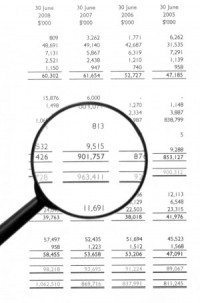Do you wonder why everyone currently uses Excel for budgeting? One of the reasons is institutions believed that their general ledger vendor had a budgeting module that they could use. It turns out that many of these “budgeting modules” just don’t work as advertised. So these institutions wind up falling back on Excel for budgeting.
The reason why people wind up disappointed is because G/L vendors lack expertise in budgeting. Think about it, there is a huge difference between financial transaction software vendors and non-financial and account balance needs. Transaction vendors don’t have a deep appreciation for the needs of non-financial people and their software applications are designed for transactional purposes like journal entries. Non-financial people do not use these financial, transactional systems. Also these vendors do not appreciate the usability needs of non-financial people.
So, as much as they try, their budgeting modules do not meet the end user flexibility needs of non-financial people. Very often, these modules do not even meet the budgeting needs of the financial people let alone non-financial users.
Budgeting is an art form. And while it is a financial application, it requires unparalleled end-user flexibility combined with financial controls. So transaction vendors simply will never get end user applications like budgeting.
So, organizations, disappointed with these budget modules from the general ledger provider take an almost as difficult path and end up programming Excel to be the budget application. Now think about this. Why would an organization put a mission critical application in a dumb two-dimensional spreadsheet? Spreadsheets are not programming languages and they certainly were not meant for data management purposes.
Also, non-financial people do not know and love Excel the way financial people do. There is simply not enough flexibility in these applications to meet the needs of the end users. And finally, and worse, the financial people become the database and end up manually managing the data that comes in from all these users, trying to check to see that the calculations still work, manually consolidating the results and then piecing together information for reporting purposes. Who wants to do that?
The only solution to this problem is to choose an applications that has built in budget intelligence, knows how and when to talk to the other transaction oriented applications like the general ledger, human resource and fixed asset systems, understands the budget workflow and is designed for non-financial and non-Excel people…like the common end user of a budget application.
Picking applications that emulate Excel does not solve the problem. A good metaphor is GPS. The best way to solve this problem is to select a budgeting application that is like GPS for budgeting. This will provide the end user with all the freedom and flexibility that they need and an interface that guides them and makes budgeting easy and fun.
Budgeting is as much a communication process as it is a financial one. This helps end-users communicate how they are supporting the strategic plan of the organization and allows them to justify and document their requests. So, choosing an application that improves communications is a must-have for institutions.
But budget systems should be able to be installed in a fraction of the time of other financial systems. A good budgeting system (and a good vendor) can be implemented in a few short weeks from soup to nuts.
In today’s tough economic world, there is more and more focus on the budgeting process. Selecting a product that meets the needs of both end-users and finance to maximize user flexibility and financial controls is imperative. Create a culture of budget accountability in your organization.

